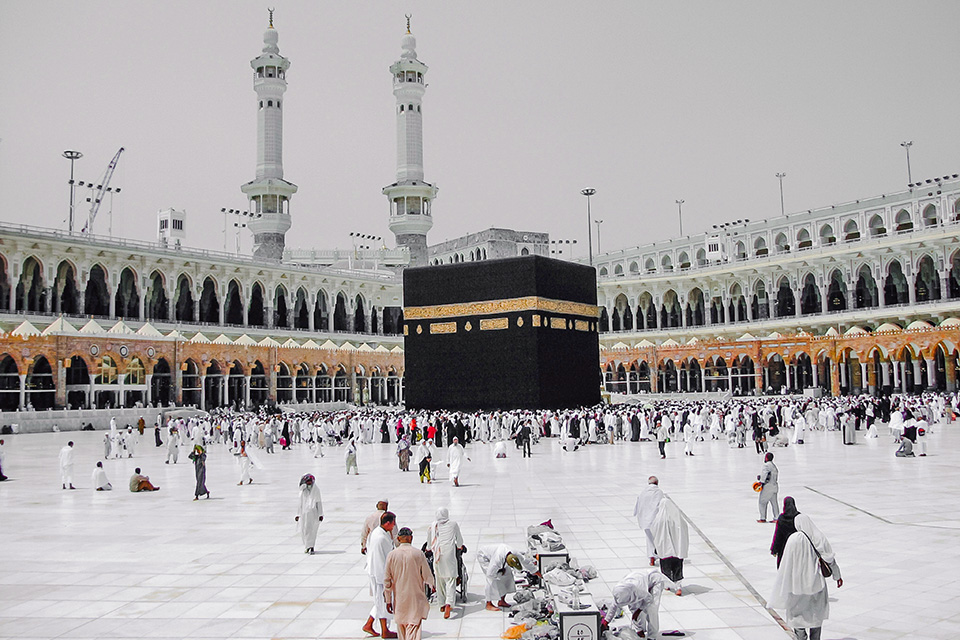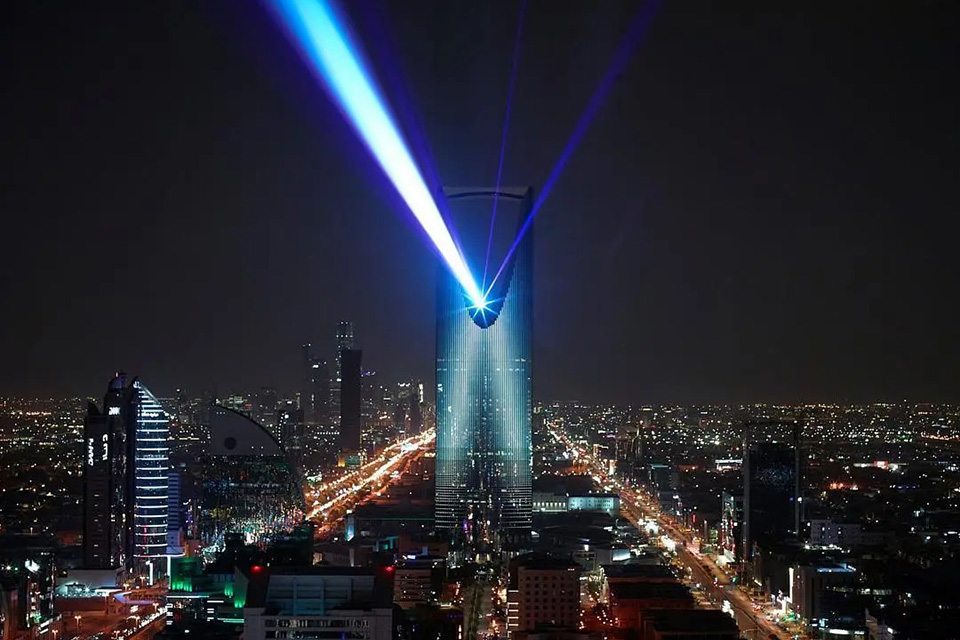- Hajj Visa
Meaning of Hajj: Its History, Rituals, and More
New to Hajj? Here’s everything you need to know about it.
Article Summary:
- Every Muslim is expected to embark on Hajj at least once in their lifetime as it is one of the Five Pillars of Islam.
- Hajj commemorates the Prophet Ibrahim’s unwavering faithfulness and devotion to Allah.
- If it is done sincerely and it is accepted by Allah, the completion of Hajj allows pilgrims to purify themselves of all sin.
Introduction
Every year, millions of Muslims around the world embark on a sacred journey, one that goes beyond geographical boundaries and connects them to the essence of their faith. This journey is known as Hajj, which is one of the Five Pillars of Islam, or Islam’s set of core beliefs and practices. For those unfamiliar, Hajj is more than just a simple pilgrimage to the holy city of Mecca—considered the birthplace of Islam—in Saudi Arabia. It has profound spiritual and historical meaning, requiring thorough physical and spiritual preparation. In this comprehensive guide, we will delve into the meaning of Hajj, exploring its significance, rituals, and the transformative impact it has on the lives of pilgrims.
Understanding the meaning of Hajj
Hajj is a spiritual pilgrimage performed by Muslims from all walks of life. It is a journey of devotion, submission, and surrender to the will of Allah (God). The meaning of Hajj literally translates to “pilgrimage” in Arabic.
As mentioned, it is one of the Five Pillars of Islam. These Five Pillars consist of the following:
- Shahada (profession of faith), a recited phrase;
- Salat (prayer), done five times a day at dawn, noon, mid-afternoon, sunset, and after dark, facing the direction of Mecca;
- Zakat (alms) or donating a fixed portion of their wealth to the less fortunate;
- Sawm (fasting) or abstaining from food and drink during Ramadan or the ninth month of the Islamic calendar; and finally,
- Hajj (pilgrimage). Every Muslim—provided he or she is physically and financially capable—is expected to make the holy journey at least once in his lifetime. Muslims may also perform the shorter version of Hajj, the Umrah pilgrimage, which may be done at any time of the year, excluding Hajj season.
Muslims believe that by undertaking Hajj, they may seek forgiveness and purify themselves of sin. If done successfully and it is accepted by Allah, it is like they have been reborn as pure as the day they were born into the world. If they are unable to perform Hajj, they may appoint another Muslim to go on the pilgrimage as their substitute.
History of Hajj
The meaning of Hajj and its spiritual significance is deeply rooted in its history.
The rituals of Hajj trace back to the time of Prophet Ibrahim (also known as Abraham) and his family, making it a commemoration of their unwavering faith and submission to Allah. Through Hajj, believers reenact the experiences of Prophet Ibrahim, his wife Hajar, and their son Isma’il, reaffirming their commitment to Allah and His commandments.
Prophet Muhammad formalized the Hajj rituals during his sole pilgrimage in the year A.D. 628. Most of the rituals, as mentioned, revolve around the following instances wherein Allah tested Ibrahim.
Allah ordered Ibrahim to leave his wife Hajar (also known as Hagar or Hajirah) and their son Isma’il (also known as Ishamel) in the desert near the Kaaba. The Kaaba is the stone structure in the center of the Great Mosque known as al-Masjid al-Haram in Mecca. It is believed to be the House of Allah, the most sacred sanctuary in Islam, and serves as the focal point towards which Muslims worldwide direct their prayers.
When Hajar and Isma’il ran out of food and water, Hajar put down Isma’il and ran up and down the hills of Safa and Marwa to seek help. In despair, she cried out and a miraculous spring known as Zamzam appeared to sustain them. Zamzam would establish Mecca as a sacred and revered site for centuries to come.
Another instance in Ibrahim’s life was when Allah commanded him to sacrifice Isma’il. Along the way, it is believed that Iblis (Satan) tried to tempt Ibrahim to disobey Allah. Today, three massive pillars stand in Jamarat, a desert outside Mecca, marking where these temptations took place. When Ibrahim tries to sacrifice Isma’il, Allah provides a ram to be sacrificed instead.
How Hajj season is determined
Hajj dates are identified annually based on the Islamic lunar calendar, also known as the Hijri calendar. It’s an Arabic calendar that is made up of 12 lunar months (Muḥarram, Ṣafar, Rabīʿ al-Awwal, Rabīʿ al-Thānī, Jumādā al-Awwal, Jumādā al-Thānī, Rajab, Shaʿbān, Ramaḍān, Shawwāl, Dhū al-Qaʿdah, and Dhū al-Ḥijjah) in a year of 354 or 355 days.
The key difference between the Hijri and the Gregorian calendar—which is used by other parts of the world—is that the Hijri calendar is based on the moon while the Gregorian calendar is based on the sun. A new moon signals the beginning of each Hijri month, while a crescent moon indicates the end of the month.
Hajj typically takes place from the 8th to the 12th day of the Islamic month of Dhu al-Hijjah, the last month of the year. This is why Hajj dates tend to differ slightly every year as it depends on the sighting of the moon, as well as the lunar calendar. Traditionally, there are Muslim authorities dedicated to observing the night sky to spot the crescent moon and mark the end of the month.
Once the Hajj dates are announced, Saudi authorities and pilgrims across the globe start to prepare to travel to Mecca to perform sacred rites.
Rituals of Hajj
Hajj consists of a series of rituals performed over several days during Hajj season, each with its significance. Collectively, these rituals are known as the five pillars of Hajj:
- Ihram: The Sacred State of Pilgrimage
Ihram signifies a state of consecration and spiritual purity, during which pilgrims abstain from certain actions, such as cutting hair or nails, using perfumes, and engaging in arguments or conflicts.Before entering the state of Ihram, pilgrims purify themselves through wudu (Islamic procedure for cleansing parts of the body) and the men wear special white garments, symbolizing equality and purity.Men must wear the upper garment, the rida, as well as the lower garment, the izar. They will need to change into it once they pass through the miqat or meeqat (Dhul-Hulayfah, Dhat Irq, Qarn Al-Manazil, Yalamlam, or Juhfah) and assume Ihram. The miqat are boundaries which, when crossed, require pilgrims to enter the state of Ihram.Women, meanwhile, may continue to wear their regular clothing as long as their hair and body are covered (with just the face, hands, and feet exposed).
The recommended footwear for both men and women is sandals or flip-flops.
- Tawaf: Circumambulation of the Kaaba
The next ritual of Hajj is the Tawaf, which requires circumambulating or walking around the Kaaba seven times in a counterclockwise direction. The Tawaf symbolizes the unity of the Muslim community and the eternal cycle of devotion to Allah. - Sa’i: The Ritual Walk between Safa and Marwa
Earlier, we spoke about the story of Hajar as she ran between the hills of Safa and Marwa in search of food and water for her and Isma’il.Honoring Hajar’s sacrifice and efforts to find water for her son, pilgrims engage in Sa’i, or walking briskly seven times between the hills of Safa and Marwa. Sa’i exemplifies perseverance, faith, and the infinite mercy of Allah. - Wuquf: Standing at Arafat
The 9th day of Dhu al-Hijjah marks the peak of Hajj, Wuquf, wherein pilgrims gather at the plain of Arafat, near Mecca.Wuquf symbolizes the Day of Judgment, where pilgrims seek forgiveness and mercy from Allah. - Tawaf al-Ifadah: Return Circumambulation and Stoning of the Devil
The next ritual of Hajj is the Tawaf al-Ifadah or the Return Circumambulation and Stoning of the Devil.Pilgrims return to the Kaaba to perform Tawaf al-Ifadah, followed by the symbolic stoning of pillars representing Satan’s temptation of Ibrahim. These rituals symbolize the triumph of faith over adversity and the rejection of evil.
Frequently Asked Questions
Although we’ve covered the meaning of Hajj, its history, rituals, and more, there might be some elements that we were not able to dive into. The following are answers to frequently asked questions about Hajj.
When is Hajj in 2024?
Hajj in 2024 is forecasted to take place between June 14 and 19. Muslim pilgrims are expected to start arriving on May 9, the first day of Dhul Qaidah, the 11th Islamic month.
Who can go to Hajj?
The process of determining Hajj pilgrims each year involves several steps and factors:
- Quota System: Each country is allocated a specific quota of pilgrims by the Saudi Arabian government, which oversees the Hajj pilgrimage. These quotas are based on the Muslim population of the country. In some Muslim countries, a lottery is performed to select Hajj participants. In non-Muslim countries, meanwhile, it is usually on a first-come, first-served basis.
- Government Selection: Governments of Muslim-majority countries usually oversee the selection process. They may employ various methods, such as lottery systems, to fairly allocate Hajj slots among eligible citizens.
- Registration: Eligible individuals who wish to perform Hajj must register with their respective government authorities or authorized Hajj agencies. Registration commonly involves providing personal information, documentation, and payment of fees.
- Criteria: Governments may prioritize certain categories of individuals, such as first-time pilgrims, elderly people, or those with health conditions. They may also consider factors like previous Hajj attendance, socio-economic status, and community contributions.
- Approval from Saudi Authorities: After the selection process at the national level, the final approval for Hajj participation comes from the Saudi Arabian government. They issue visas and other necessary permissions for pilgrims to enter the Kingdom and perform the pilgrimage.
Overall, the process aims to ensure fairness, safety, and proper management of the large number of pilgrims who converge on Mecca each year for the Hajj.
Does registering on Nusuk mean that I have been accepted for Hajj?
No. Registering on Nusuk does not equate to being accepted into Hajj. Check if you are a citizen of the serviced countries on Nusuk for 2024. If you are eligible, you can register through the platform.
Once registered, you may apply for a Hajj visa through authorized service providers who can assist you with the visa application process. It will be up to the Ministry of Umrah & Hajj to approve your Hajj visa.
How many days is Hajj?
Hajj typically takes place for five days, from the 8th to the 12th day of the Islamic month of Dhu al-Hijjah, the last month of the year. Hajj dates tend to differ slightly every year as it depends on the sighting of the moon, as well as the lunar calendar.
Conclusion
In essence, the meaning of Hajj goes beyond it being a pilgrimage; it is a profound spiritual journey that sanctifies the core principles of Islam—submission, devotion, and unity.
Through its rituals and symbolism, Hajj instills in pilgrims a deep sense of humility, gratitude, and interconnectedness with fellow believers. The meaning of Hajj serves as a reminder of the transient nature of life and the ultimate return to Allah. As Muslims undertake this sacred pilgrimage, they not only fulfill a religious obligation but also undergo a transformative experience that enriches their faith and strengthens their bond with the divine.






